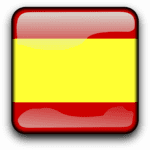Each noun and adjective in Arabic has a gender. A noun or adjective in Arabic can have one of two genders: مُـذَكَّــر (mudhakkar) ‘masculine’ or مُـؤَنَّـث (mu’annath) ‘feminine.’ There is no neuter gender.
Gender Rules in Arabic
The adjective follows the noun it describes in gender and number. Luckily, some general rules can help us determine the gender of a noun or adjective in Arabic. However, remember that these are general rules, and there are some exceptions.
Of course, there will be some obvious masculine and feminine nouns. For instance, we can deduce that رَجُــل (rajul) ‘man’ and أَمــيـــر (’amīr) ‘prince’ are masculine, regardless of any rules. Similarly, words that refer to a female person are feminine, e.g., أُمّ (’umm) ‘mother,’ حـامِــل (ḥāmil) ‘pregnant,’ أُخْـــت (’ukht) ‘sister,’ بِـنْـــت (bint) ‘girl,’ etc.
Words that are Likely Feminine in Arabic
In Arabic, a noun or adjective is likely feminine if it falls under one of the following categories:
1. Nouns ending with ة (tā’ marbūṭah) ‘tied-t’ are likely feminine, such as:
| بَـقَـرَة (baqarah) ‘cow’ | شَــجَـرَة (shajarah) ‘tree’ |
| طــاوِلَــة (ṭāwilah) ‘table’ | ســاعَــة (sā‘ah) ‘hour/clock’ |
| لُـغَـة (lughah) ‘language’ | غُــرْفَـة (ghurfah) ‘room’ |
There are a few exceptions to this rule:
- Some male names, such as أُســامَــة (’usāmah), خَـلـيـفَـة (khalīfah), عُـبَـيْـدَة (‘ubaydah), and طَـلْـحَـة (ṭalḥah).
- Some exaggeration words, such as رَحَّـالَـة (raḥḥālah) ‘frequent traveler,’ نـابِـغَـة (nābighah) ‘genius,’ and عَـلّامَــة (‘allāmah) ‘very knowledgeable,’ which can be masculine or feminine.
2. Colors and deformities ending with اء (ā’) are likely feminine. Here are some examples of colors in Arabic:
| Color | Masculine | Feminine |
| blue | أَزْرَق (’azraq) | زَرْقــاء (zarqā’) |
| black | أَسْــوَد (’aswad) | سَـــوْداء (sawdā’) |
| green | أَخْــضَـر (’akh ḍar) | خَــضْراء (khaḍrā’) |
| red | أَحْــمَـر (’aḥmar) | حَــمْـراء (ḥamrā’) |
| white | أَبْــيَــض (’abyaḍ) | بَــيْــضــاء (bayḍā’) |
| yellow | أَصْــفَــر (’aṣfar) | صَـفْــراء (ṣafrā’) |
Here are two common examples of deformities that follow the same pattern:
| Deformity | Masculine | Feminine |
| limping | أَعْـــرَج (’a‘raj) | عَــرْجــاء (‘arjā’) |
| blind | أَعْــمـى (’a‘mā)* | عَــمْـيــاء (‘amyā’) |
* As an exception, we replace the expected “ay” at the end of the word with ى (’alif maqṣūrah) pronounced /ā/.
Most other nouns and adjectives ending with اء (ā’) are masculine, such as: دَواء (dawā’) ‘medication,’ هَــواء (hawā’) ‘air,’ and مــاء (mā’) ‘water.’
However, there are also a few feminine words like: سَــمــاء (samā’) ‘sky,’ صَــحْــراء (ṣaḥrā’) ‘desert,’ and رَمْــضــاء (ramḍā’) ‘scorching ground.’
3. Adjectives ending with ى (’alif maqṣūrah), and whose masculine form ends with ـان (-ān), are feminine. For example:
| Masculine | Feminine | |
| thirsty | عَـطْـشـان (‘aṭshān) | عَـطْـشـى (‘aṭshā) |
| lazy | كَـسْـلان (kaslān) | كَـسْـلـى (kaslā) |
This rule also applies to some feminine adjectives ending with ى (’alif maqṣūrah) following the pattern:
| Adjective | Masculine | Feminine |
| bigger/biggest | أَكْــبَــر (’akbar) | كُـبْـرى (kubrā) |
| smaller/smallest | أَصْــغَــر (’aṣ ghar) | صُـغْـرى (ṣughrā) |
| first | أَوَّل (’awwal) | أولـى (’uwlā) |
| other | آخَــر (’ākhar) | أُخْــرى (’ukh rā) |
Note that the masculine forms of the adjectives above are used to express comparatives and superlatives in Arabic.
4. Most names of cities and countries are feminine. For example:
| Cities | Countries |
| الــقُــدْس (al-quds) ‘Jerusalem’ | مِــصْــر (miṣr) ‘Egypt’ |
| بَــغْــداد (baghdād) ‘Baghdad’ | فِـلِـسْـطيـن (filisṭīn) ‘Palestine’ |
| دِمَــشْــق (dimashq) ‘Damascus’ | فَــرَنْـســا (faransā) ‘France’ |
The following seven Arab countries are exceptions to the rule and are masculine:
| الــعِــراق (al-‘irāq) ‘Iraq’ | الـيَــمَــن (al-yaman) ‘Yemen’ |
| لُــبْــنــان (lubnān) ‘Lebanon’ | الأُرْدُن (al-’urdun) ‘Jordan’ |
| الـسّــودان (as-sūdān) ‘Sudan’ | الـمَـغْــرِب (al-maghrib) ‘Morocco’ |
| الـصّــومـال (aṣ-ṣūmāl) ‘Somalia’ | |
5. Many nouns that are related to nature are feminine, such as:
| أَرْض (’arḍ) ‘earth’ | سَــمــاء (samā’) ‘sky’ |
| شَــمْــس (shams) ‘sun’ | ريـــح (rīḥ) ‘wind’ |
However, there are exceptions to this rule like:
| قَـــمَــر (qamar) ‘moon’ | ثَـــلْــج (thalj) ‘snow’ |
| كَـــوْكَــب (kawkab) ‘planet’ | نَـــجْــم (najm) ‘star’ |
6. Most body parts that come in pairs are feminine, whereas most other body parts are masculine. Here are some examples:
| Masc. – Does not come in pairs | Fem. – Comes in pairs |
| شَـعْـر (sha‘r) ‘hair’ | عَـيْـن (‘ayn) ‘eye’ |
| رَأْس (ra’s) ‘head’ | أُذُن (’udhun) ‘ear’ |
| قَـلْـب (qalb) ‘heart’ | قَـدَم (qadam) ‘foot’ |
| دِمـاغ (dimāgh) ‘brain’ | رِجْـل (rijl) ‘leg’ |
| كَـبِـد (kabid) ‘liver’ | يَــد (yad) ‘hand’ |
Some exceptions include:
| Masc. – Comes in pairs | Fem. – Does not come in pairs |
| إِبْـهـام (’ibhām) ‘thumb’ | جَـبْـهَـة (jabhah) ‘forehead’ |
| إِبْـط (’ibṭ) ‘armpit’ | لِـحْـيَـة (liḥyah) ‘beard’ |
Even though these rules are quite helpful in guiding you most of the time, it is not possible to encompass all nouns and adjectives. There are a few feminine nouns that do not fall under any of the six categories, such as:
| دار (dār) ‘house’ | حَــرْب (ḥarb) ‘war’ |
| نَــفْــس (nafs) ‘self’ | روح (rūḥ) ‘spirit’ |
Use of ة (tā’ marbūṭah) ‘tied-t’ as a Feminine Marker
Finally, many nouns and adjectives can be made feminine by adding a ة (tā’ marbūṭah) ‘tied-t’ to the end of the masculine form. For example:
| Masculine | Feminine | |
| student | طـالِـب (ṭālib) | طـالِـبَــة (ṭālibah) |
| engineer | مُـهَـنْـدِس (muhandis) | مُهَـنْـدِسَــة (muhandisah) |
| teacher | مُـعَــلِّـم (mu‘allim) | مُـعَـلِّـمَــة (mu‘allimah) |
| big | كَـبـيـر (kabīr) | كَـبـيـرَة (kabīrah) |
| tired | مُـتْـعَــب (mut‘ab) | مُـتْـعَــبَــة (mut‘abah) |
| urgent | عـاجِـل (‘ājil) | عـاجِـلَــة (‘ājilah) |
Back to: Double Vowel Ending – تَـنْويـن (Tanwīn)
Other lessons in Level II:









